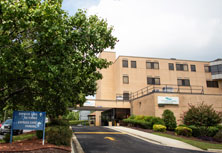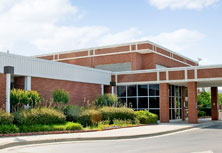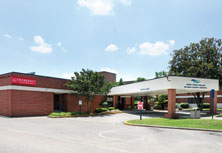Audiology / Hearing Aids
Who is an Audiologist?
An audiologist is a professional who specializes in the prevention, identification, assessment, and (re)habilitation of auditory, balance, and other related systems. Audiologists are required to obtain a master’s or doctoral degree in audiology from an accredited university. Audiologists are required to perform a one-year externship under the supervision of a certified audiologist prior to the completion of the doctoral degree. Many universities also require the completion of a thesis or dissertation prior to receiving the doctoral degree. As of 2012, all audiologists will be required to hold a doctoral degree in audiology.
What does a comprehensive audiologic evaluation involve?
A comprehensive audiologic evaluation involves a number of tests in order to assess the type and degree of a patient’s hearing sensitivity.
Pure-tone Audiometry -The patient is placed in a sound-treated room and asked to listen to tones of various frequencies and intensities under earphones. This test aids in determining a patient’s hearing sensitivity for the range of typical everyday sounds.
Speech Audiometry - The patient is asked to detect and/or repeat words at low-level and comfortable volumes. This test is helpful in determining a patient’s ability to process speech sounds. A patient’s ability to discriminate speech is often an indicator of how well he or she will benefit from amplification.
Immittance Audiometry - Immittance audiometry is used to determine the resistance in the middle ear system. It involves two tests: tympanometry and acoustic reflex testing. Tympanometry measurers the flexibility of the eardrum; it helps to identify the presence of middle ear fluid, a functioning ventilation tube, or an eardrum perforation. Acoustic reflex testing assesses the integrity of the middle ear system as well as the central auditory nervous system (CANS).
How does an audiologist test a child’s hearing?
There are several tests that can be used to measure a child’s hearing. The following tests can be used on children and adults who cannot respond behaviorally to an acoustic signal because they are performed while the patient is asleep or in a resting state. The following tests can also be used to obtain more information of the actual “site of lesion” that is causing the hearing impairment.
Auditory Brainstem Response (ABR) - Electrical signals produced by the auditory nerve in response to rapid clicking sounds are recorded and analyzed. ABR testing is often used to rule out the presence of an acoustic neuroma or auditory neuropathy. ABR testing is also used to approximate hearing thresholds and infants or adults who cannot be tested with conventional audiometry.
Otoacoustic Emissions (OAEs) - A very weak signal (emission), produced by the cochlea in response to a sound, is measured by a special microphone placed in the ear canal. OAEs are used to assess the function of the cochlea.
Electrocochleography (EcochG) - The EcochG is recorded and analyzed in the same manner as the ABR; however, the EcochG is used to assess the electrical pattern of the cochlea instead of the auditory nerve.
For a list of commonly used terms associated with assessment and treatment, click here.
Services Offered (Adult and Pediatric):
- Comprehensive audiologic evaluation
- Electrophysiologic testing, including ABR, OAEs, EcochG
- (Central) Auditory Processing Disorder evaluation
- Hearing aids
- Custom earmolds (hearing protection, swim plugs, musician’s plugs, etc)
For more information:
Speech and Audiology Department (910) 615-6079
Fax (910) 615-5480
Outpatient Registration Desk (910) 615-4990
Hours of Operation: Monday - Friday, 8:00 a.m. - 4:30 p.m.











